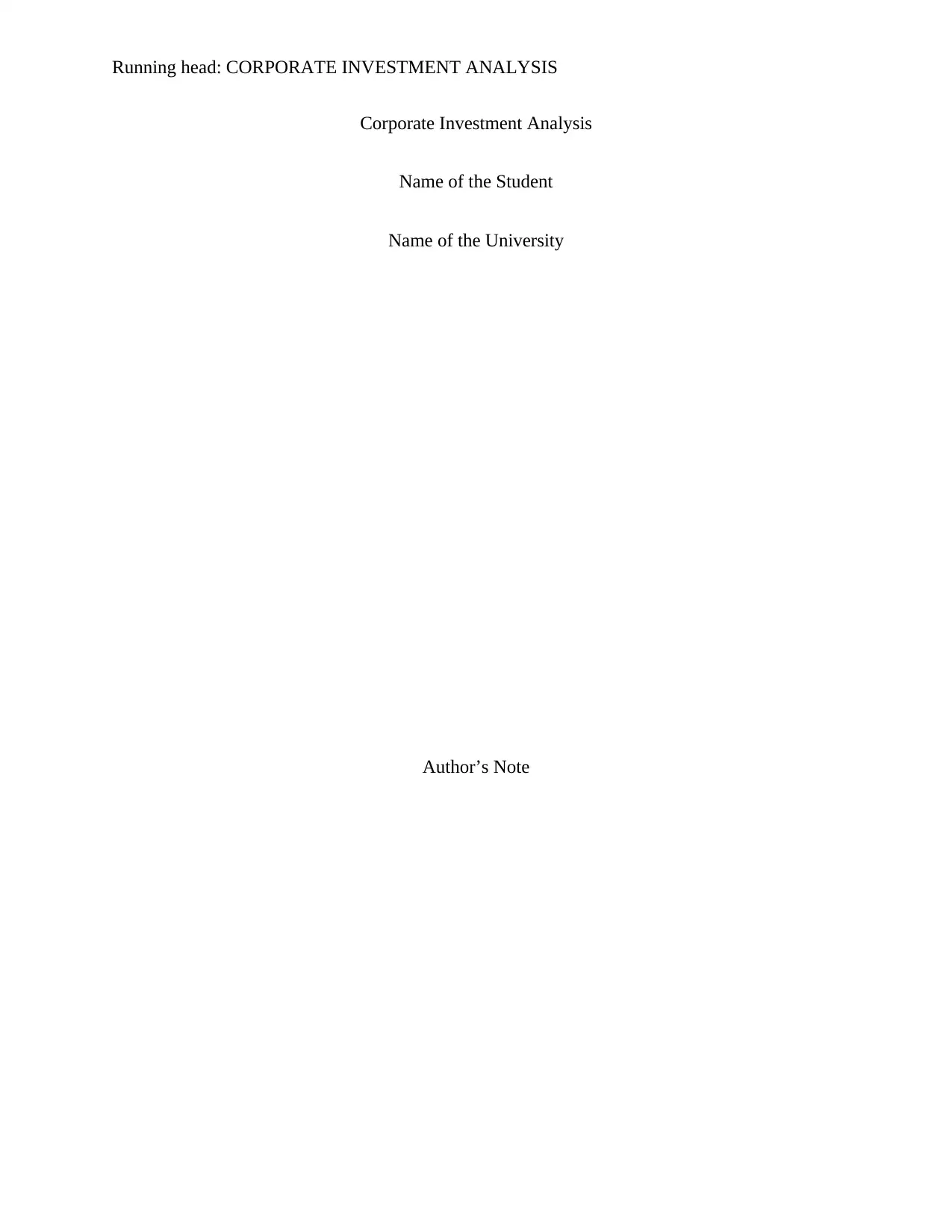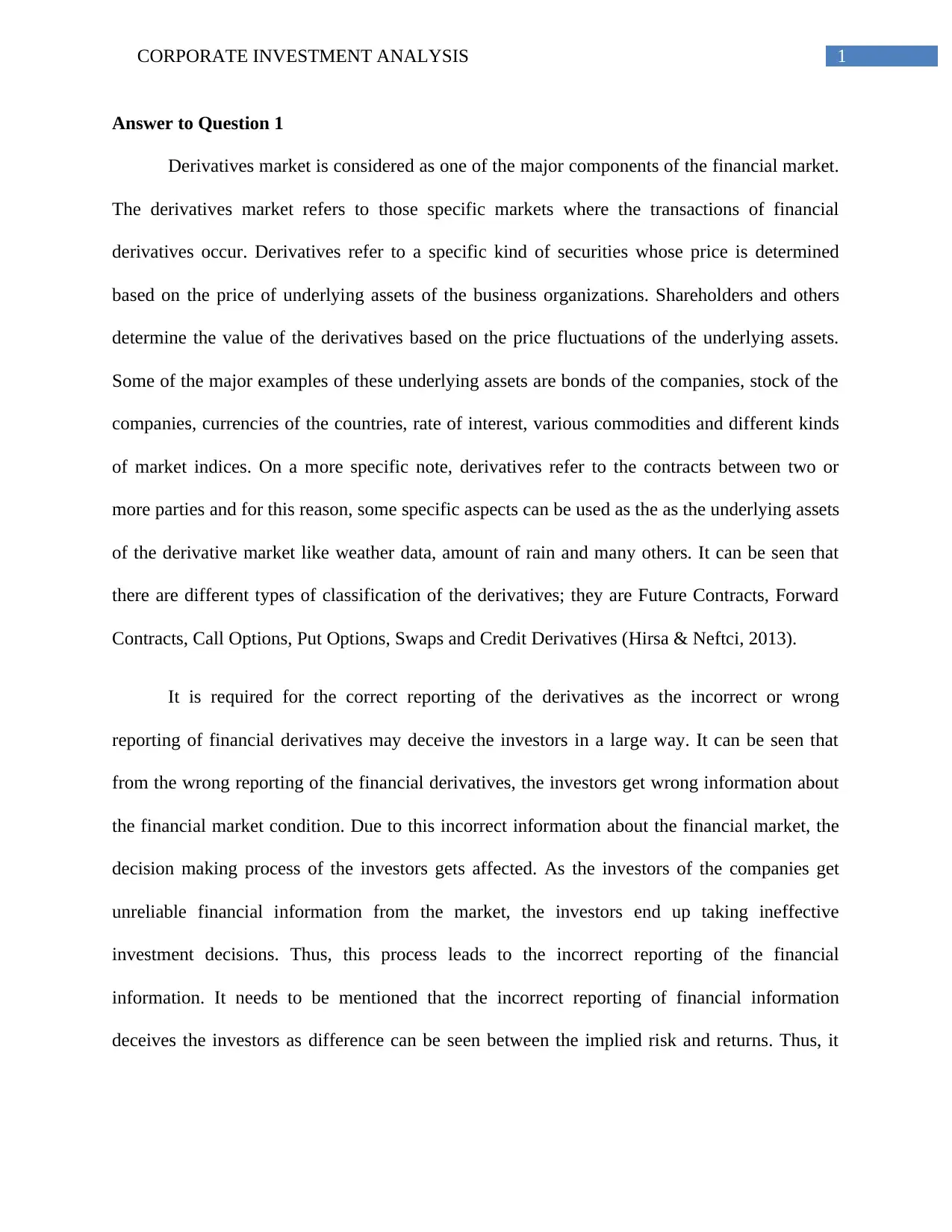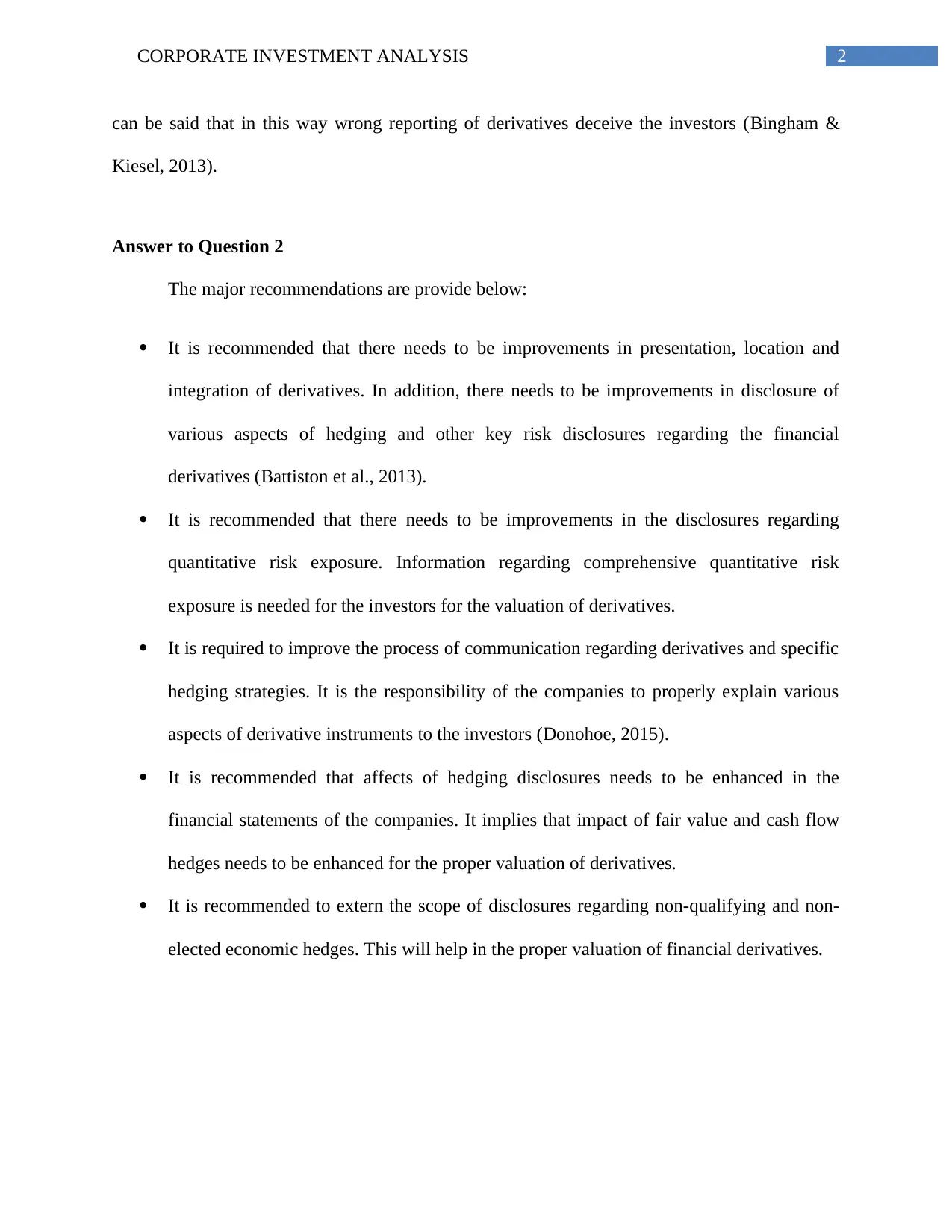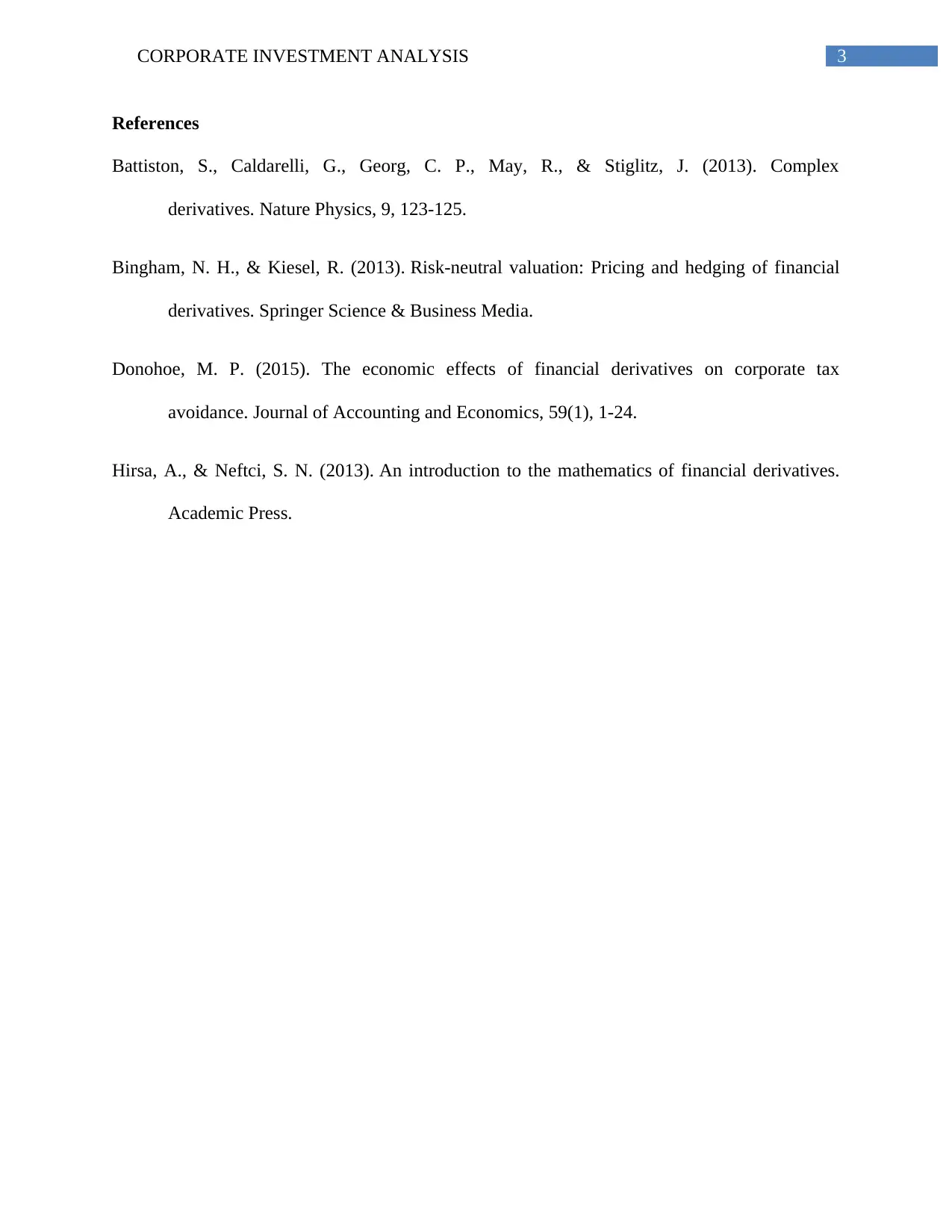Corporate Investment Analysis Report - Finance Module, University XYZ
VerifiedAdded on 2020/02/24
|4
|719
|161
Report
AI Summary
This report, titled 'Corporate Investment Analysis,' delves into the realm of financial derivatives and their significance in the financial market. It begins by defining derivatives and their role in relation to underlying assets like company stocks, bonds, and currencies. The report then explores the importance of accurate reporting of financial derivatives to prevent investor deception and ensure informed decision-making. It highlights the consequences of incorrect reporting, such as misleading investors and leading to ineffective investment choices. The report provides key recommendations for enhancing transparency and disclosure in the presentation, location, and integration of derivatives, as well as improvements in quantitative risk exposure disclosures, and communication of hedging strategies. Furthermore, the report emphasizes the need to enhance the effects of hedging disclosures in financial statements and extend the scope of disclosures regarding non-qualifying and non-elected economic hedges to facilitate proper valuation of financial derivatives.
1 out of 4











![[object Object]](/_next/static/media/star-bottom.7253800d.svg)